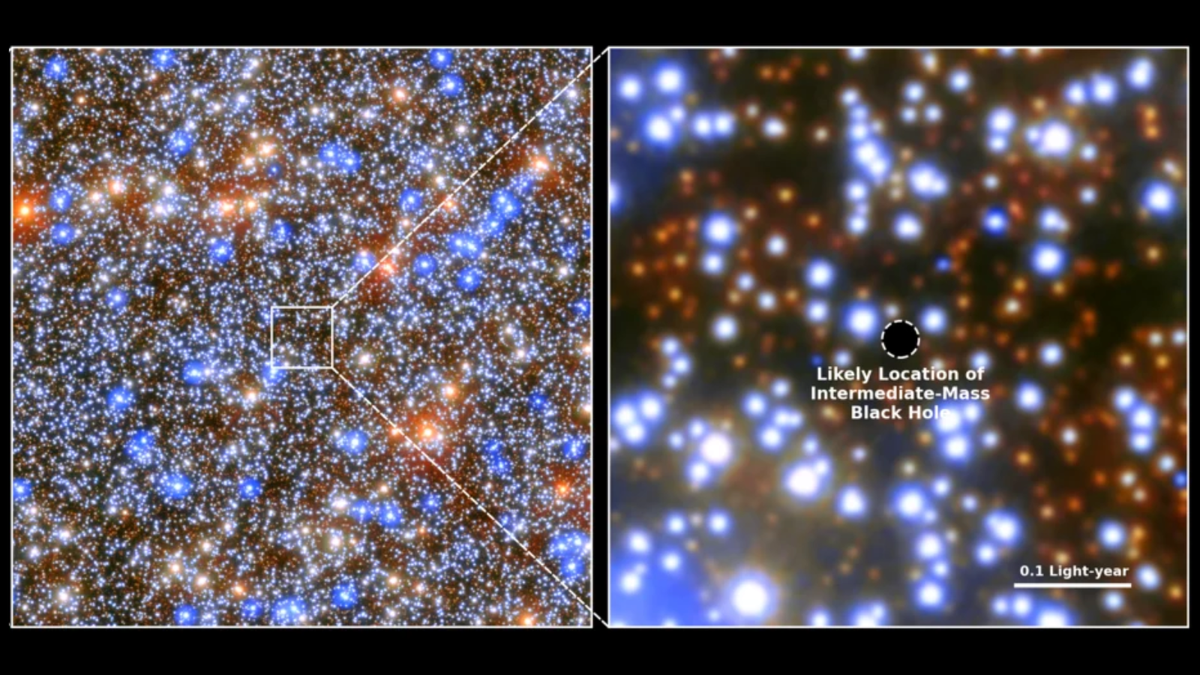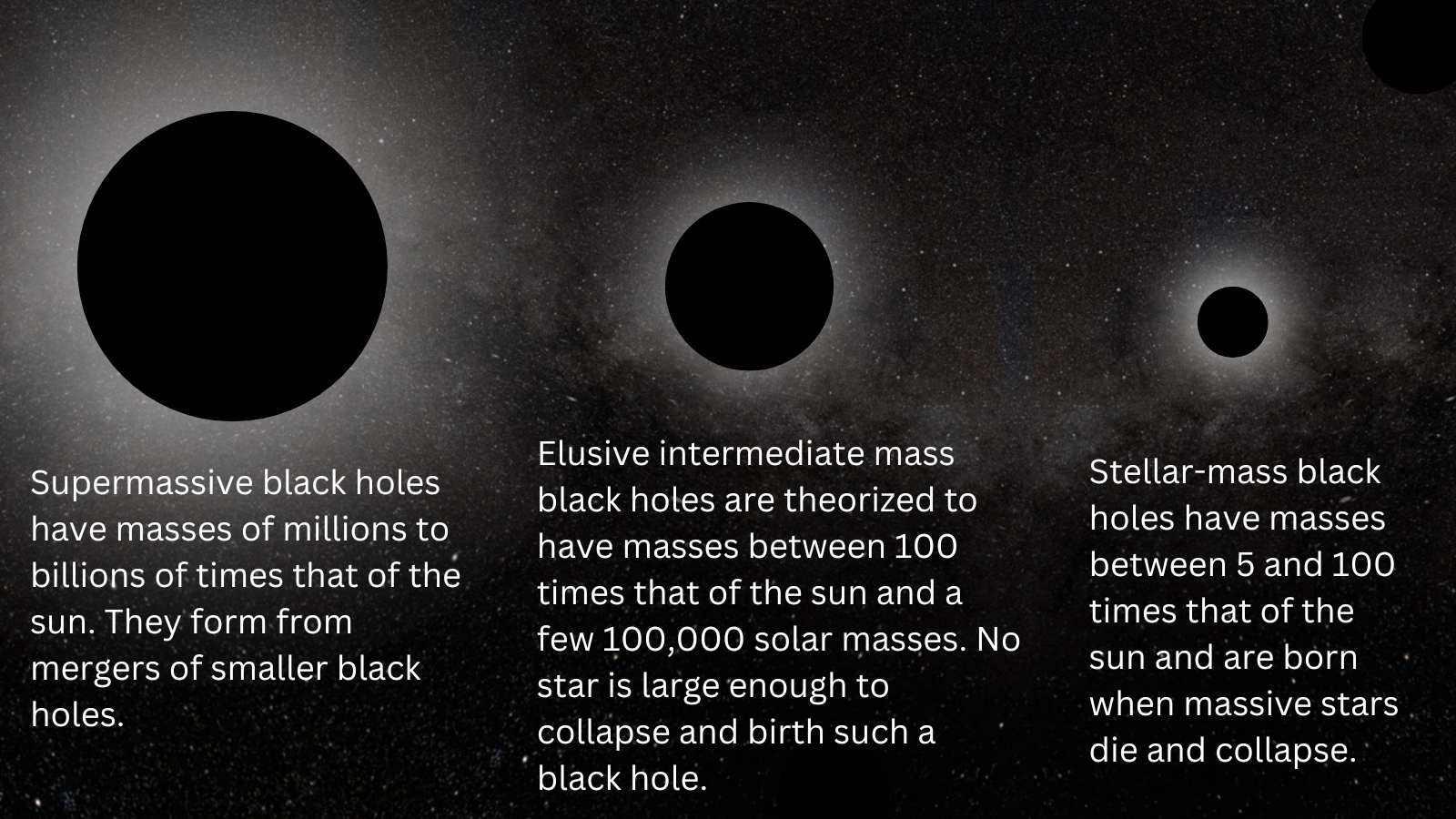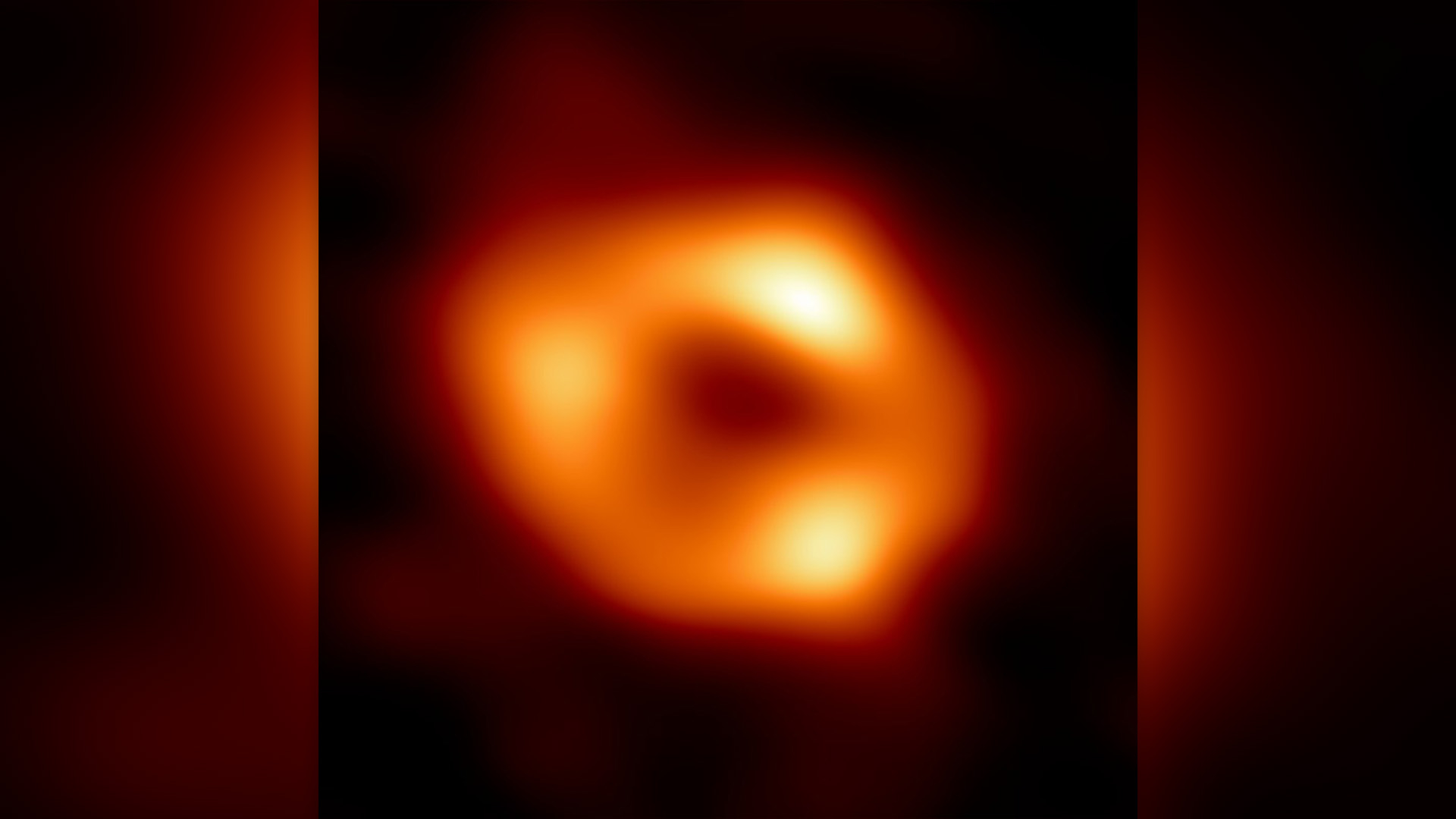
Using the Hubble Space Telescope, astronomers have discovered the closest supermassive black hole to Earth ever seen, a cosmic behemoth “frozen in time.”
As an example of an “intermediate-mass black hole” that is difficult to detect, this object may be a missing link in understanding the relationship between stellar mass and supermassive black holes. The black hole appears to have a mass of about 8,200 solar masses, making it much more massive than stellar-mass black holes, which have masses between 5 and 100 solar masses, and much less massive than supermassive black holes, which have masses of millions to billions of solar masses. The closest stellar-mass black hole scientists have discovered is called Gaia-BH1, and it is located just 1,560 light-years away.
On the other hand, the newly discovered intermediate-mass black hole resides in a stunning cluster of about ten million stars called Omega Centauri, which is located about 18,000 light-years from Earth.
Interestingly, the fact that the “frozen” black hole appears to have stopped growing supports the idea that Omega Centauri is the remnant of an ancient galaxy that was devoured by our own.
Related: See how a supermassive black hole traps a “fluffy” disk in this simulation
This suggests that Omega Centauri is actually the nucleus of a small, separate galaxy that stopped evolving when it was swallowed by the Milky Way. Had this event not occurred, this intermediate black hole might have grown to a supermassive black hole like the Milky Way’s supermassive black hole, Sagittarius A* (Sgr A*), which has a mass 4.3 million times that of the Sun and is located 27,000 light-years from Earth.
Find what is missing
Scientists have known for some time that not all black holes are created equal. While stellar-mass black holes are known to form from the collapse of stars with at least eight times the mass of the Sun, supermassive black holes must have a different origin. That’s because no star is massive enough to collapse and leave behind a black hole. Millions Many times the size of the sun.
Therefore, scientists suggest that supermassive black holes are born and grow as a result of the merger of chains of black holes that gradually increase in size. This has been proven by the detection of ripples in spacetime, called gravitational waves, emitted by merging black holes.
The process of black hole mergers and growth, combined with the huge gap in mass between stellar-mass black holes and supermassive black holes, means that there should be a large number of intermediate-mass black holes.
However, these intermediate-mass black holes, with masses ranging from a few hundred to a few thousand times the mass of the Sun, seem to have mostly evaded detection. This is because these intermediate-mass black holes, like all black holes, have outer boundaries called event horizons.
The event horizon is the point at which the gravitational influence of a black hole becomes so great that even light cannot escape. Thus, black holes can only be seen in light if they are surrounded by matter feeding on them, which glows as it heats up, or are torn apart and fed by an unfortunate star in what is called a tidal disruption event (TDE).
Intermediate black holes, such as the one in Omega Centauri, are not surrounded by much matter and are not feeding.
That means astronomers have to be a little clever when looking for such black holes. They use the gravitational effects these voids have on matter, such as stars orbiting them or light passing through them. The new discovery team used the former.
speeding star
The search for this intermediate black hole began in 2019 when Nadine Neumayer of the Max Planck Institute for Astronomy (MPIA) and Anil Seth of the University of Utah designed a research project to improve our understanding of Omega Centauri’s formation history.
In particular, the researchers, together with Maximilian Haberl, a doctoral student at the Max Planck Institute for Astronomy, wanted to find fast-moving stars in Omega Centauri that would prove that the cluster has a massive, dense or compact black hole, a “central engine.” A similar method has been used to determine the mass and size of Sgr A* using a cluster of fast-moving stars in the heart of the Milky Way.
Haberli and his team used more than 500 Hubble images of this cluster to build a massive database of star motions in Omega Centauri, measuring the velocities of about 1.4 million stars. This repeated image of Omega Centauri, which Hubble did not out of scientific interest but to calibrate its instruments, was the perfect data set for the team’s mission.
“Searching for high-velocity stars and documenting their motion was like looking for a needle in a haystack,” Haberli said. In the end, the team didn’t find a single needle, just one. Seven “Needle-in-a-haystack stars,” all moving at high speeds in a small region at the heart of Omega Centauri.
The high speed of these stars is due to a nearby concentrated mass. If the team had found just one speeding star, it would have been impossible to determine whether its speed was due to a large, nearby central mass, or whether it was a runaway star moving very quickly in a straight path—in the absence of any central mass.
The observations and measurements of the different speeds and directions of seven stars allowed them to reach this conclusion. The measurements revealed a central mass equivalent to 8,200 Suns, while visual inspections of the region did not reveal any star-like objects. This is exactly what we would expect to find if a black hole were present in this region, which the team defined as “light-months.”
The fact that our galaxy is mature enough to grow a supermassive black hole at its core means that it may have passed the stage of having many intermediate-mass black holes. The team says that this black hole is in the Milky Way because the cannibalization of its parent galaxy has curtailed its growth.
“Previous studies have raised important questions such as: Where are the high-velocity stars located? Now we have an answer to this question and confirmation that Omega Centauri contains an intermediate-mass black hole. At a distance of about 18,000 light-years, this is the closest known example of a supermassive black hole,” said Haberli.
Of course, this doesn’t really change Sgr A*’s status as the closest supermassive black hole to Earth, or Gaia BH1’s status as the closest stellar-mass black hole to Earth — but it does provide some reassurance that scientists are on the right track when they think about how our central black hole became a cosmic giant in the first place.
The team’s research was published Wednesday (July 10) in the journal Nature.

“Web maven. Infuriatingly humble beer geek. Bacon fanatic. Typical creator. Music expert.”








More Stories
SpaceX launches 23 Starlink satellites from Florida (video and photos)
A new 3D map reveals strange, glowing filaments surrounding the supernova
Astronomers are waiting for the zombie star to rise again